After over a week of being “stuck” in beautiful Portree, our temporary home on the Isle of Skye, it was finally time for my younger brother Brandon and I to explore more of the island as we both had two days off work! We hadn’t planned our days completely, but we knew that we wanted to explore as much of the popular Northern Loop as possible by hitchhiking.
The Northern Loop is the most well-travelled road on Skye, starting and ending in Portree and going around the northern peninsula, Trotternish. The route features most of the famous sights on Skye, including the Storr, the Fairy Glen and the Quirang.
We had high hopes of seeing everything on our must-see list on the Northern Loop during those two days, but it didn’t happen for two reasons; 1. Hitchhiking on the Isle of Skye in January is not easy, not at all! 2. We kept coming across beautiful places while driving that we wanted to explore further.

The Fairy Glen
We began the first day of our hitchhiking journey by walking out of Portree towards the large Coop supermarket, the best place to catch a ride to Uig in the North. Our first planned destination of the day was the Fairy Glen, located just two kilometers from Uig.
After standing in the rain for 20 minutes or so with no luck whatsoever, we were finally picked up by a lovely local man who lives – not in Uig – but right next to the Fairy Glen! How lucky can you get!? That was definitely a great start to our hitchhiking adventure!
The local man works as a crofter and has seventeen sheep roaming the Fairy Glen. He told us a lot about the Fairy Glen and its unique landscape of grassy, cone-shaped hills created by landslips. The castle-resembling hill, known as Castle Ewen, dominates the landscape and is the perfect place to get a view of the entire area.
Despite its name, the Fairy Glen has little to do with fairies. No legends or stories about fairies are known from this area, although I can see how this unusual place would be the perfect wishful home of fairies. Unfortunately, as our wonderful new friend told us, these false fairy beliefs – or wishes – have resulted in tourists moving rocks to create spirals and cairns to be used in rituals where a token is often left behind “for the fairies”. The only problem is, there are no fairies and thus, all this does is ruin nature and create litter. It also creates work for the locals as they gather annually to remove the stone spirals and cairns in an attempt to keep the area in its natural state. Let’s all help them by not participating in these silly games (or Instagram schemes), shall we?
We wandered around the Fairy Glen for a while, taking nothing but pictures and memories and leaving nothing but footprints. Just like it should be. We tried to reach a waterfall by walking through wet marshlands, but we came across a wide river halfway there, so we had to turn back. We saw a few other tourists as we approached the Fairy Glen again, but it was nice and peaceful, and nothing like it would’ve been in the summer months. January was definitely the right time to go there!
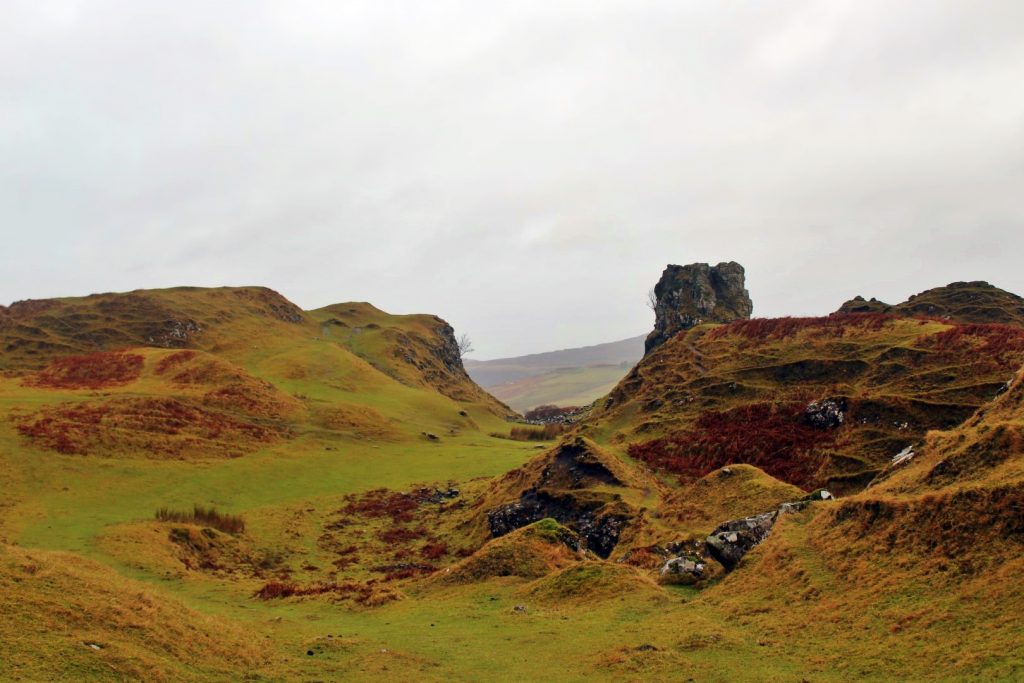
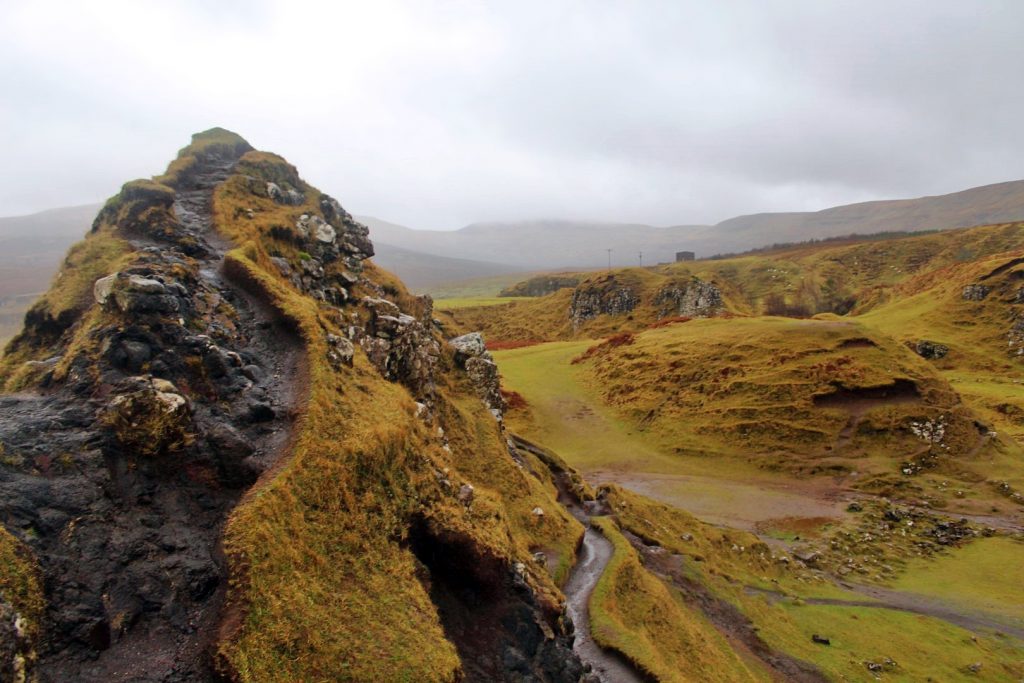
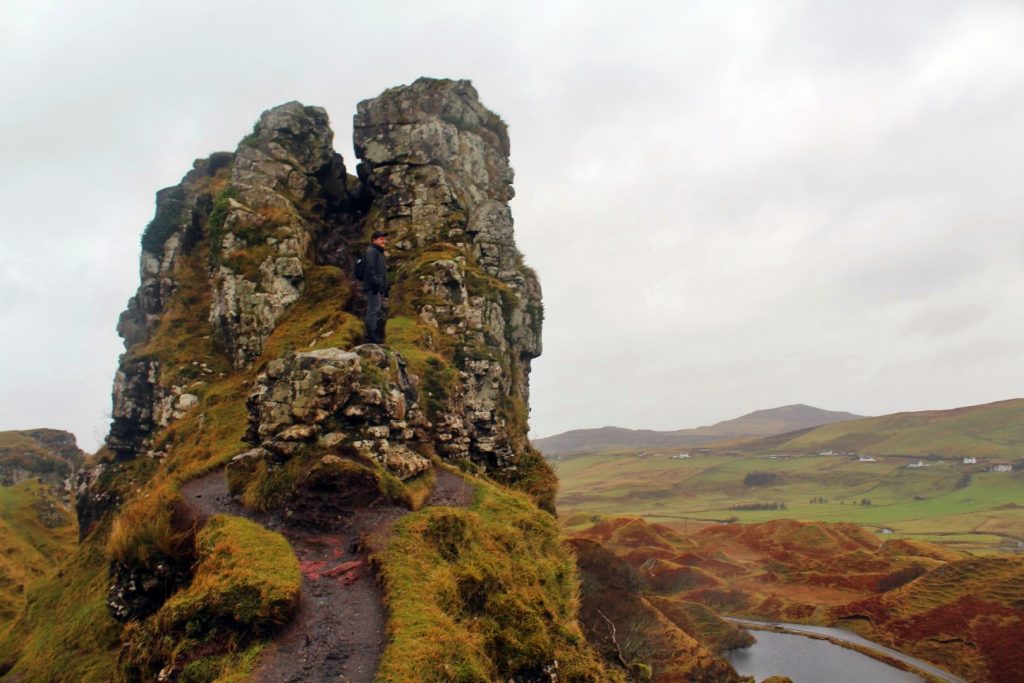
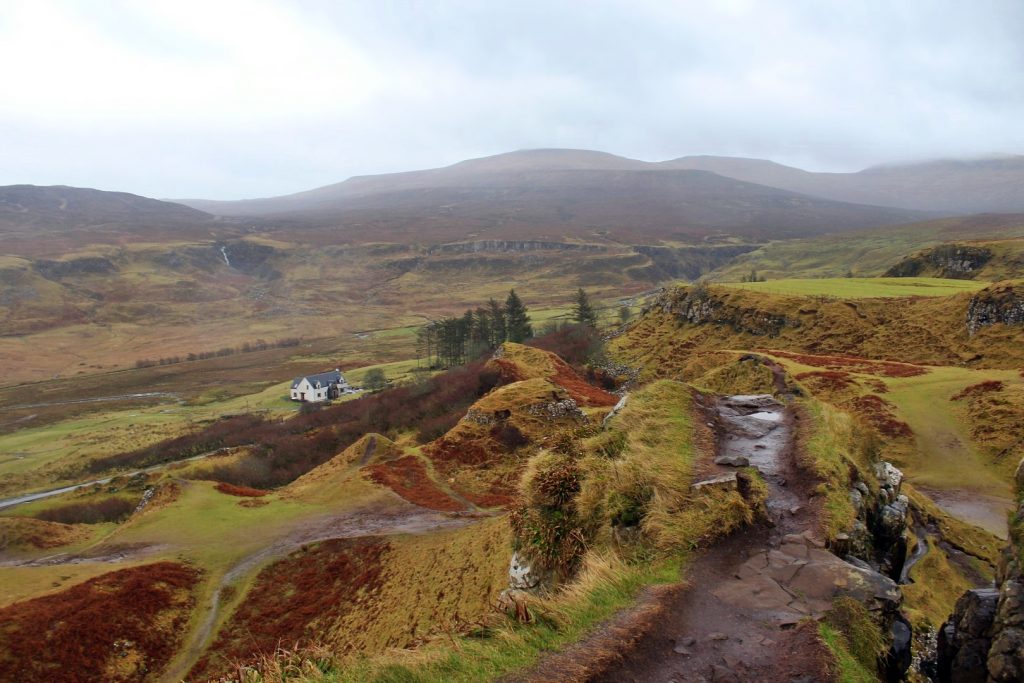
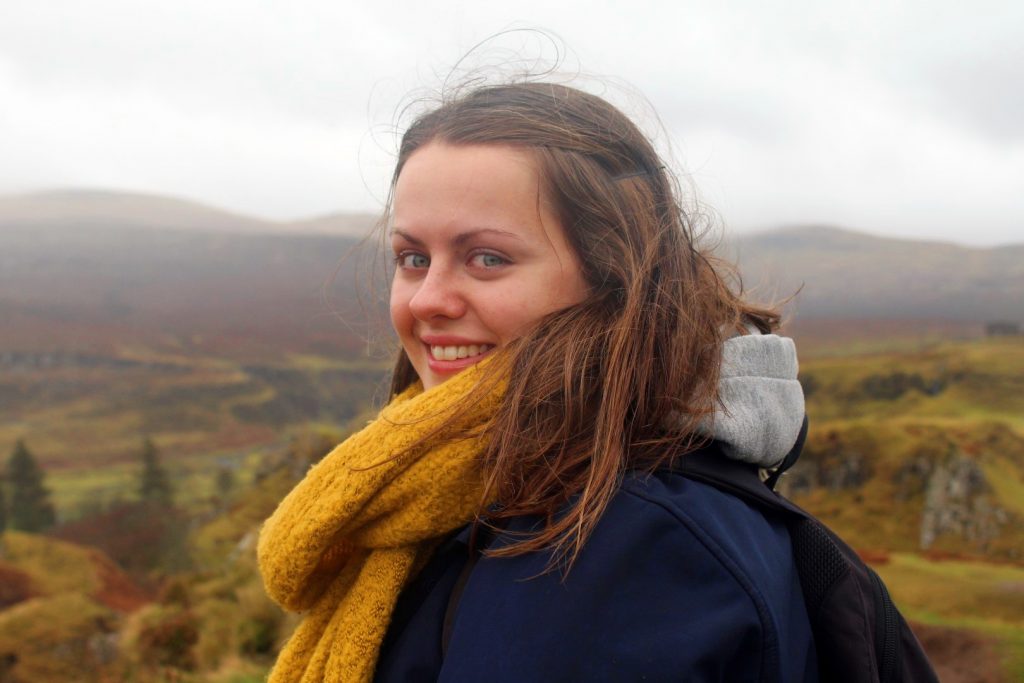
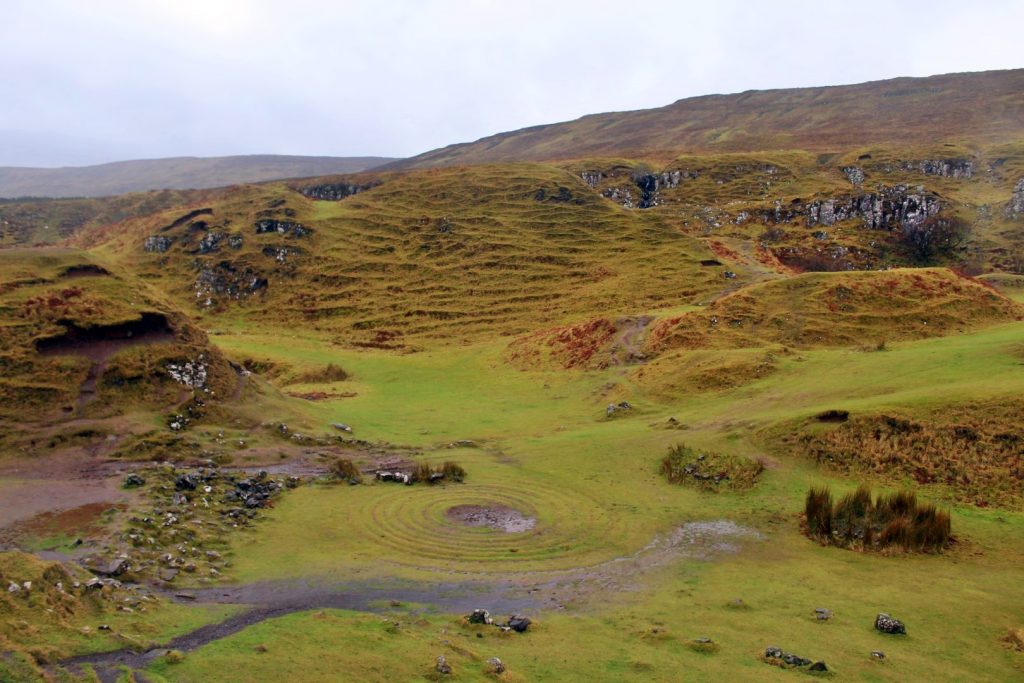
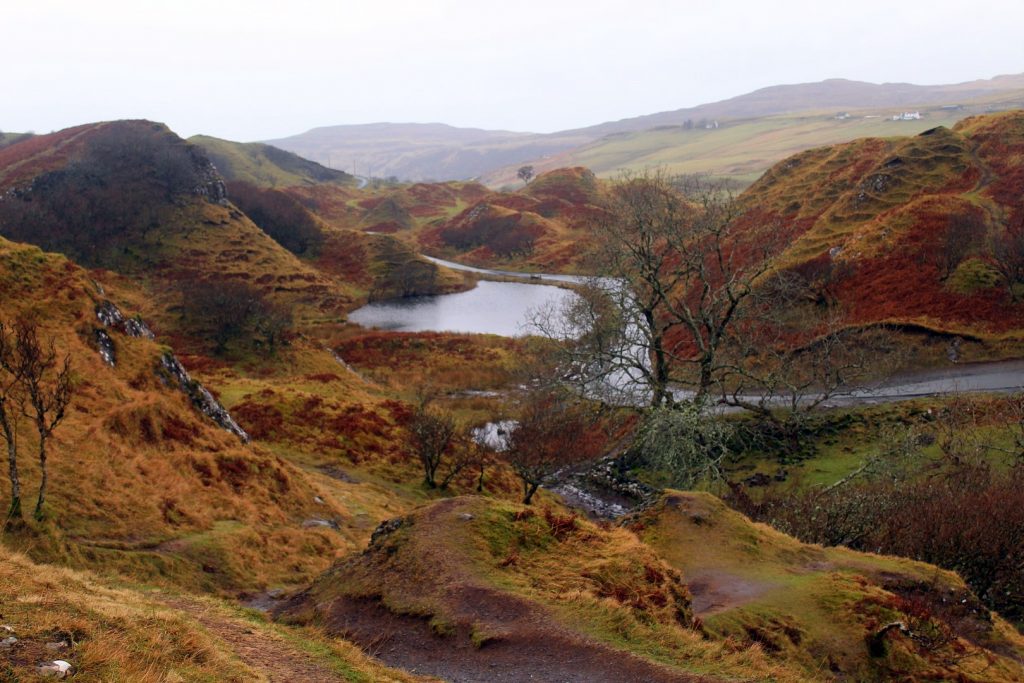
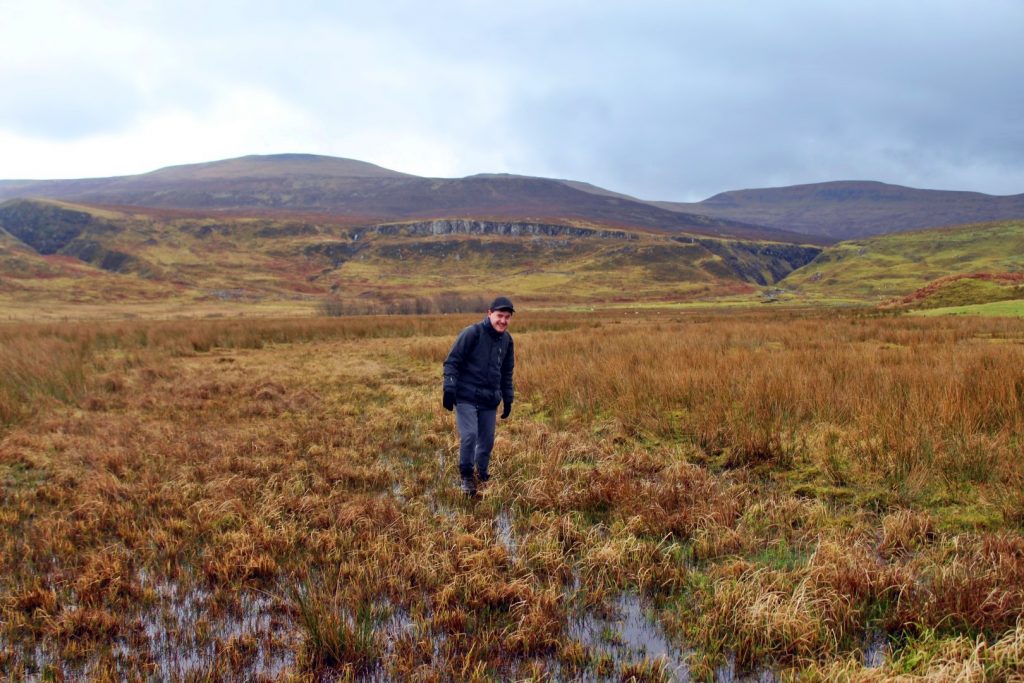
The Village of Uig
As we walked out of the Fairy Glen towards Uig, two of the tourists came driving along the road. We stuck our thumbs in the air and they stopped to pick us up, taking us to the village. The two were a Belarusian couple, who got very excited when I told them about my trip to Belarus back in 2017. This was actually the first time I’d ever met Belarusians outside of Belarus – and who’d have thought it would be on Skye in January!?
Uig is a small town of about 200 inhabitants, however, it’s an important port as it connects Skye with the Outer Hebrides with daily ferry departures to Tarbert and Lochmaddy. We took a short walk in Uig, visiting some small shops and enjoying the view from the harbour, before continuing on our journey north.
We stood for a while just outside of Uig with only a few cars passing by, none of them stopping for us. Out of the blue, one of Brandon’s friends, Kamil, appeared and offered to drive us a bit further along the road. We didn’t know at the time, but he lives in the house behind our chosen hitchhiking spot and works a few miles further north! What a wonderful coincidence.
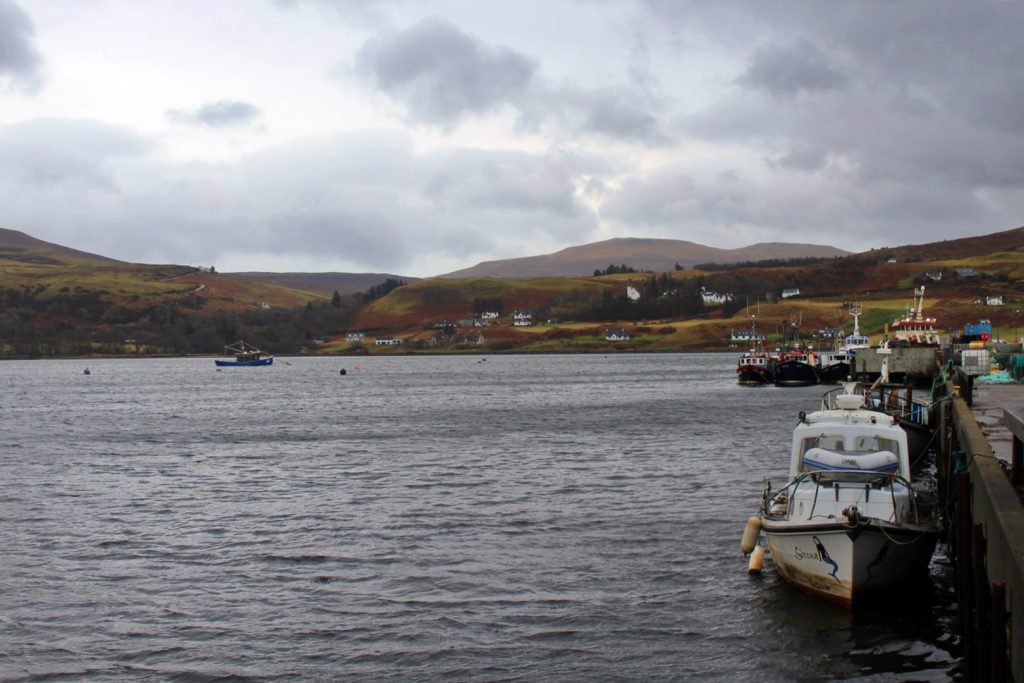
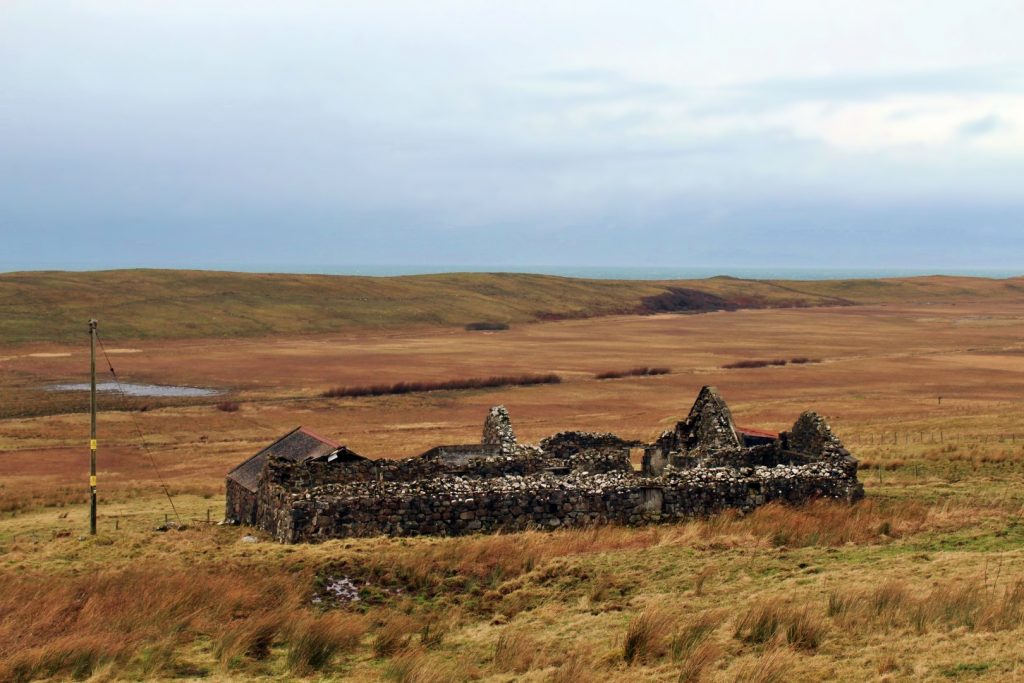
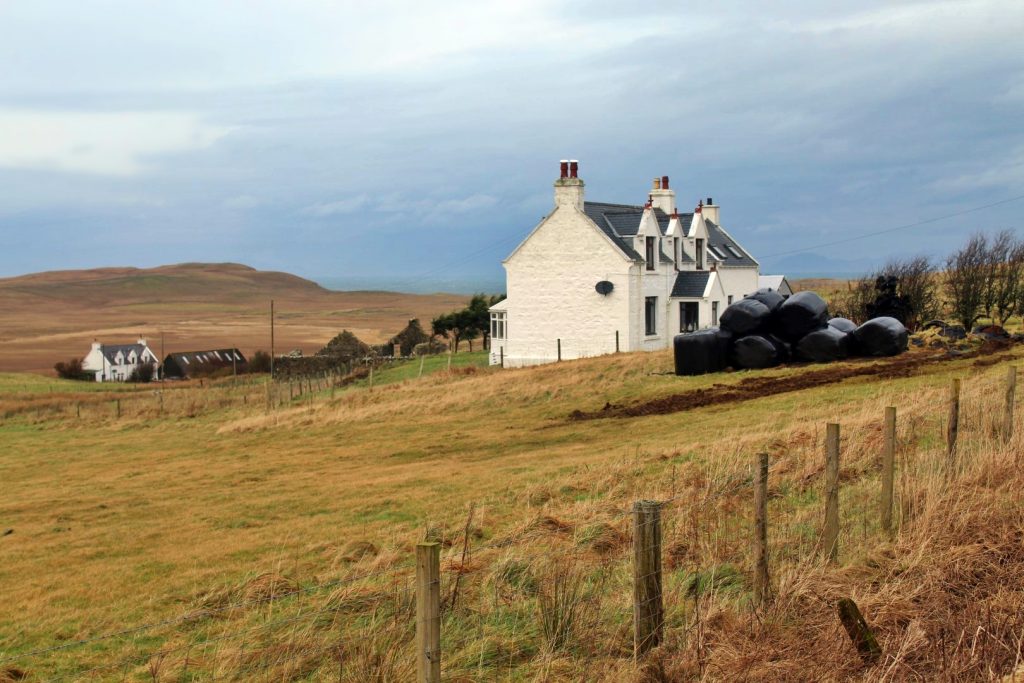


The Dinosaur Footprints at Staffin
The weather wasn’t great that day. It was constantly raining and it only got worse the later it got. By the time we’d left Uig, we only had three hours of daylight left, so we decided to just visit the “easy” places that didn’t requre hiking.
Kamil dropped us off somewhere along the road and we started walking north, waiting for a car to pass by. For fifteen minutes, we didn’t see any cars, until a local pastor came by and stopped for us. He willingly drove us all the way to the beach near Staffin while telling us about the local area and his job as a pastor. Hands-down the nicest pastor I’ve ever met!
At Staffin, we wanted to see the famous dinosaur footprints on the beach at An Corran. These footprints were left by a family of Ornithopods, herbivorous dinosaurs that walked on two legs, some 165 million years ago. The prints are covered by the sea at high tide, and often by sand in the summer, but we got lucky although it was difficult to locate them! Luckily, Brandon had been there before, so he was able to point a few out to me.

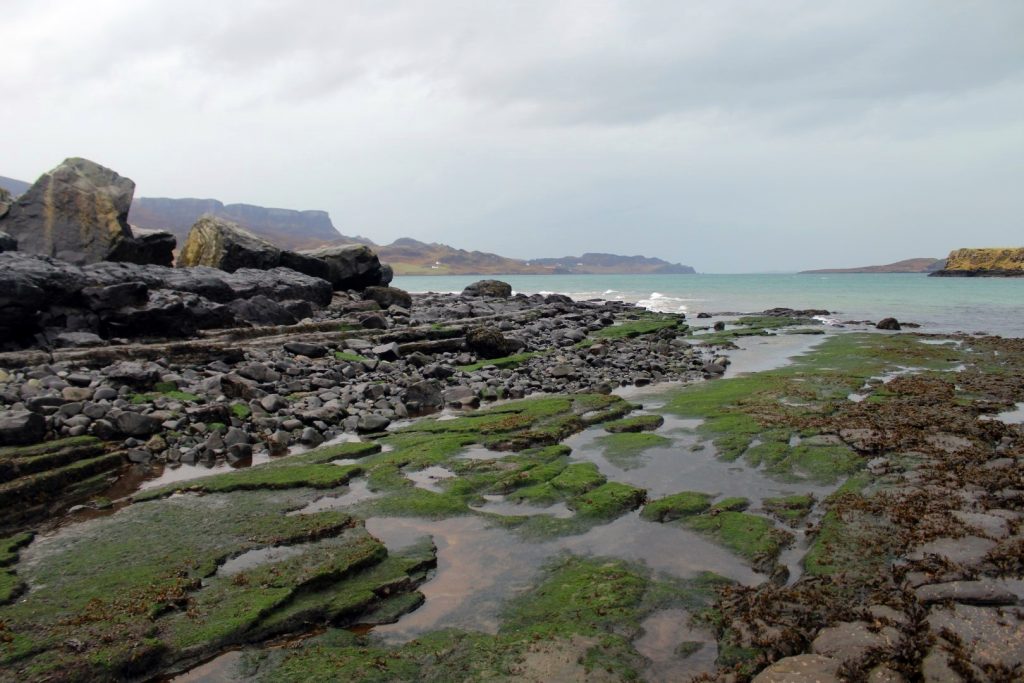
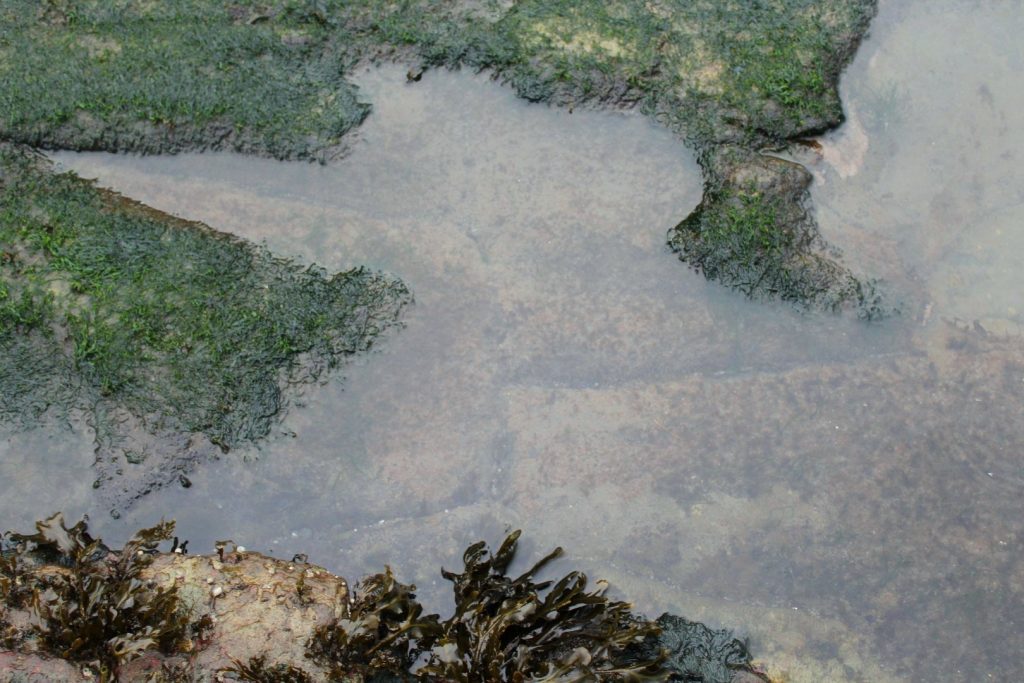
Kilt Rock and Mealt Waterfall
As we were walking back to the road, we met a local couple with their adorable dog Maple, who drove us back to the village of Staffin. We walked around Staffin for a while, before meeting them again and getting a ride to the viewpoint for Kilt Rock and the Mealt Waterfall, the last stop for the day.
These two popular sights can be seen from the same viewpoint as Mealt Waterfall falls right beside Kilt Rock, which is made up of basalt columns resting on a sandstone base, and – apparently – resembles a pleated kilt (I couldn’t see it…). It’s a nice place, although it is just an easy stop on a roadtrip. It takes no effort at all to get there and thus, this place is always packed in the summer. Lucky for us, we were only among a few other tourists on this rainy January day.
We figured that it would be easy to get back to Portree from there. There was still an hour until sunset and we were on the most touristy route heading for the largest town on the island. But we couldn’t have been more wrong. Maybe Kilt Rock is cursed, because getting a ride there was just impossible. We stood for two hours in the rain with cars passing by every five minutes or so. No one even considered picking us drenched people up. Our pastor friend did stop for us, but unfortunately, he was on his way back from Portree to Staffin, so we stayed put. A fox came to say hi twice, but other than that, it was pretty miserable. In the end, our feet were so cold and we were so exhausted that we decided to knock on the door of a nearby house to get help. They were incredibly kind and let us inside while they checked the bus times. The bus was scheduled to arrive three minutes later, so we thanked the lovely people and ran outside just in time to catch the bus, our saviour.


A month or so went by before we dared to hitchhike around Trotternish Peninsula again. In the meantime, we only returned to visit The Storr and to go on a trip with two friends to Brother’s Point, but these two adventures deserve their own posts. In early February, on yet another rainy day, we braved it again, attempting to hitchhike around the Northern Loop once again to visit all the places we’d missed during our first attempt! Here’s how that went:
Saint Columba’s Isle
The first stop of the day was actually not on the Northern Loop, but just a few kilometers from it – Saint Columba’s Isle. We walked to the Coop again to attempt to get a ride out of Portree, and after 30 minutes of waiting, luck struck again. We were picked up by a man who was going to work right next to Saint Columba’s Isle! The coincidence was incredible, especially considering how remote the island is!
We started the day in good time, and soon found ourselves by the bridge that leads to the tiny historic island. Saint Columba’s Isle may be small and hidden, but its historical significance stretches back over many centuries, back to when the island was the centre of Christianity in the Hebrides from 1079 when it was founded by Saint Columba to 1498 when the buildings were destroyed during the Scottish reformation. Two visible ruins can be seen on the island, as well as hundreds of graves, ranging in age from the 11th century to the 1960s, containing several bishops and chiefs as well as residents of Skye.
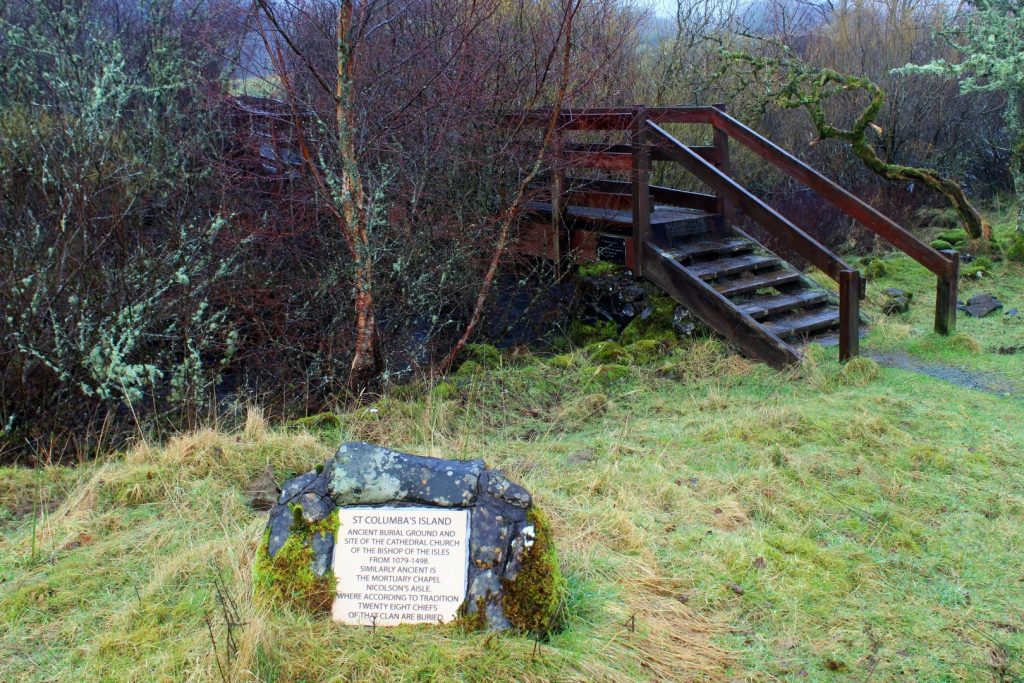

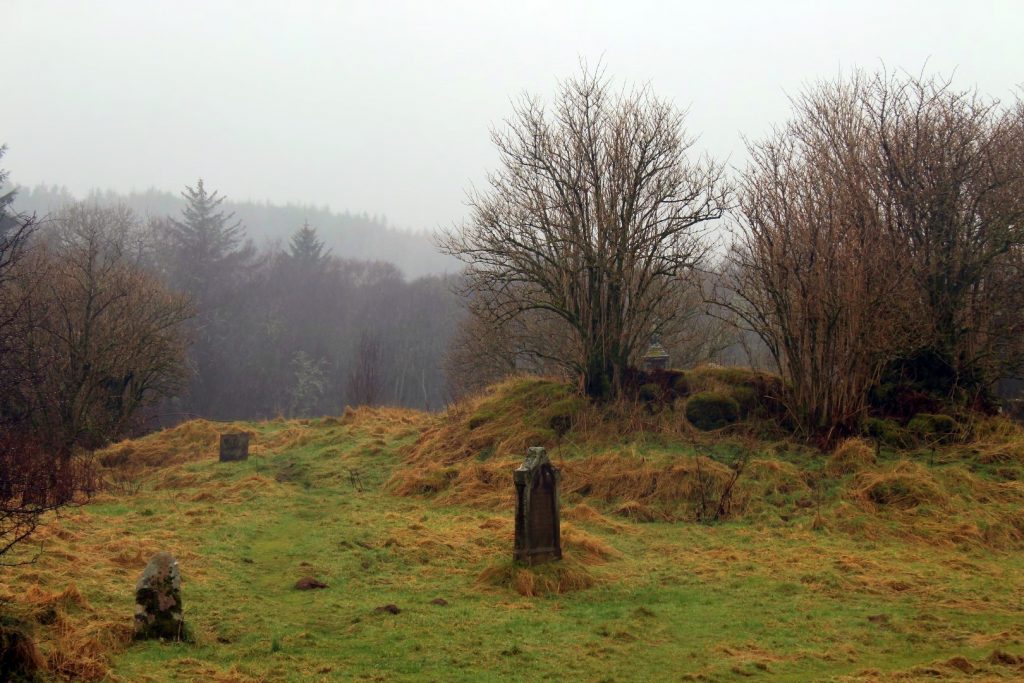

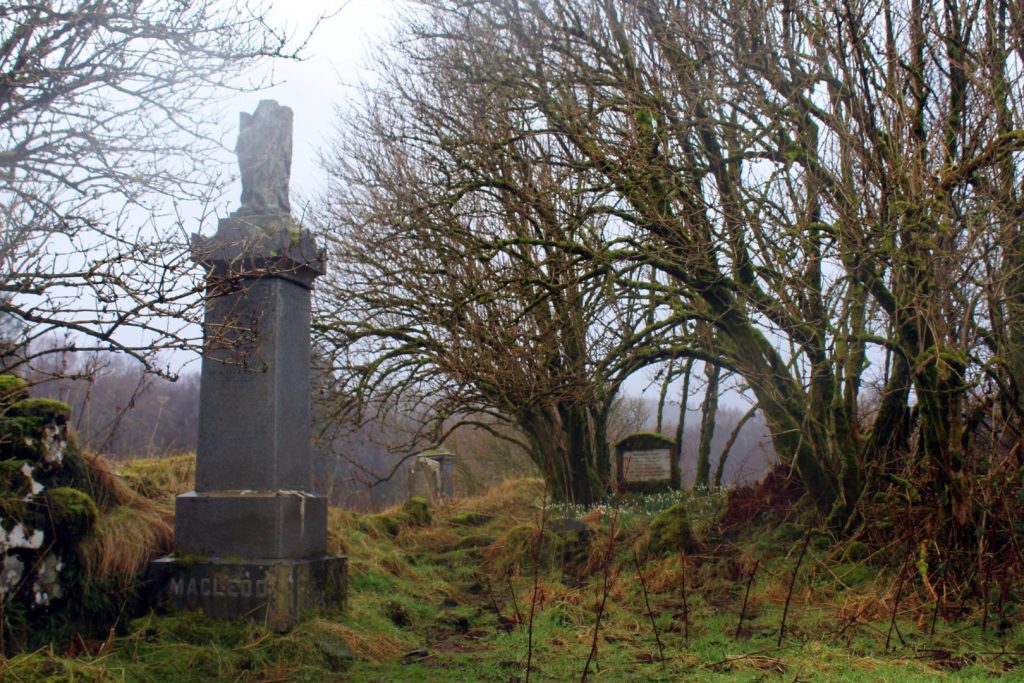
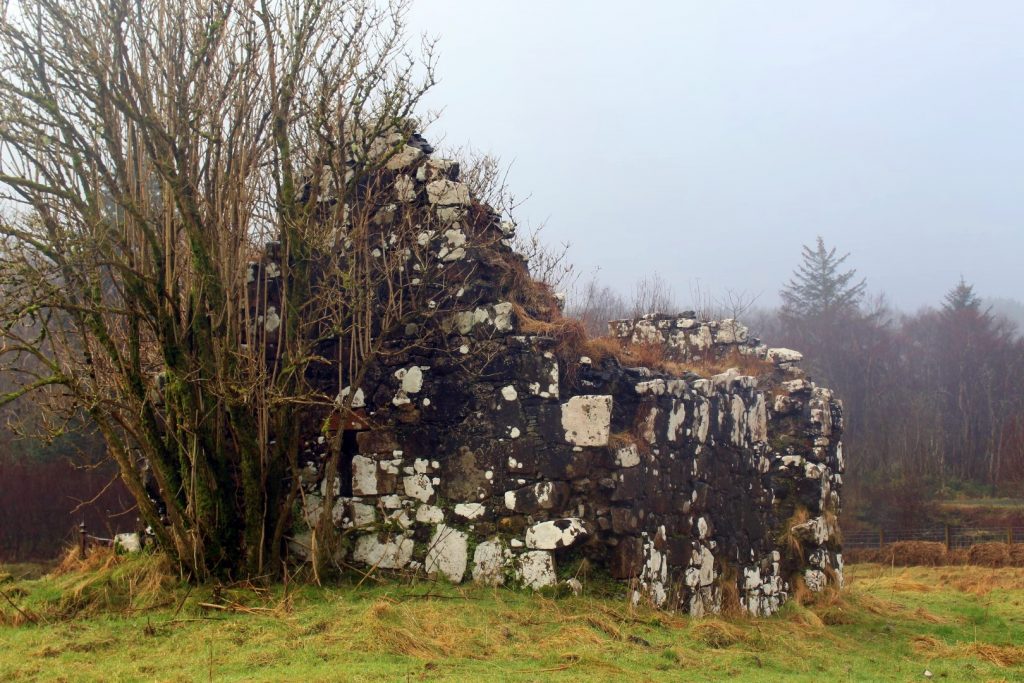
Kilvaxter Iron Age Homestead & Souterrain
We continued our explorations of Skye’s ancient history at our next destination, the Kilvaxter Iron Age Homestead and Souterrain. Getting there was easier than feared as we were picked up almost immediately after leaving Saint Columba’s Isle and again soon after, where we got a ride all the way to Uig. In Uig, we stood at our old hitchhiking spot just outside Kamil’s house, and just as we’d joked about Kamil coming by again, his mother came out of the door and offered to drive us all the way to Kilvaxter. What a nice family!
Kilvaxter is actually a place that was recommended by a regular customer at our work after he’d heard that I’d studied archaeology. He told me about the Iron Age souterrains, underground stone-lined tunnels leading to chambers, of which 500 have been found in Scotland, including 20 on the Isle of Skye. The souterrains are thought to have been constructed to provide winter storage for barrels of food which the residents would need throughout the spring. The souterrain at Kilvaxter, as well as the associated farmstead, are both incredibly well-preserved and well worth a visit on at trip around Trotternish!
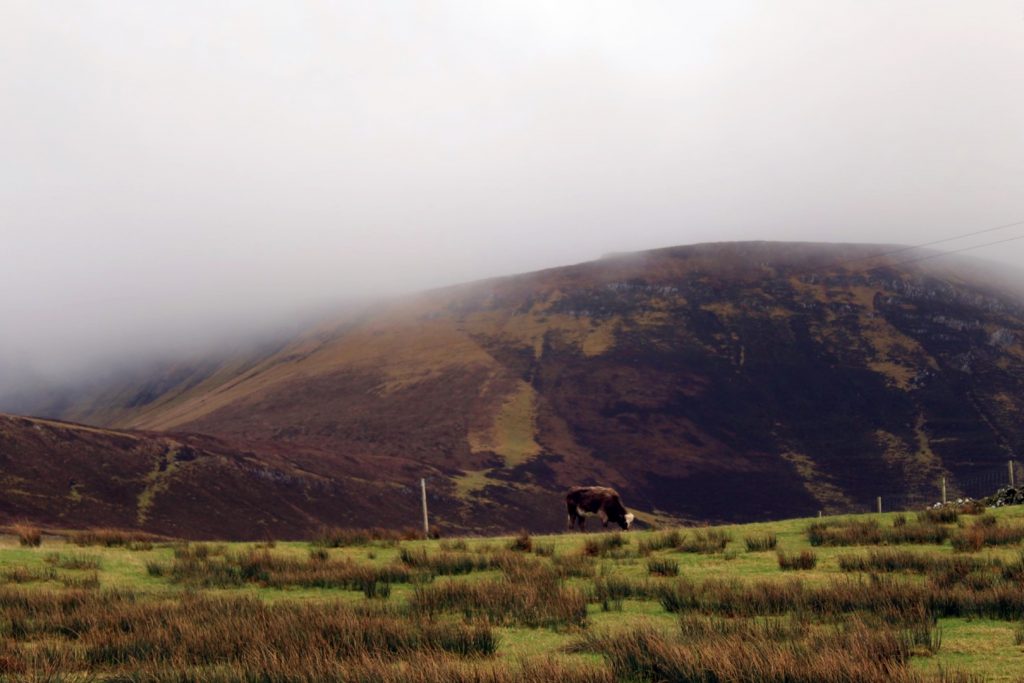
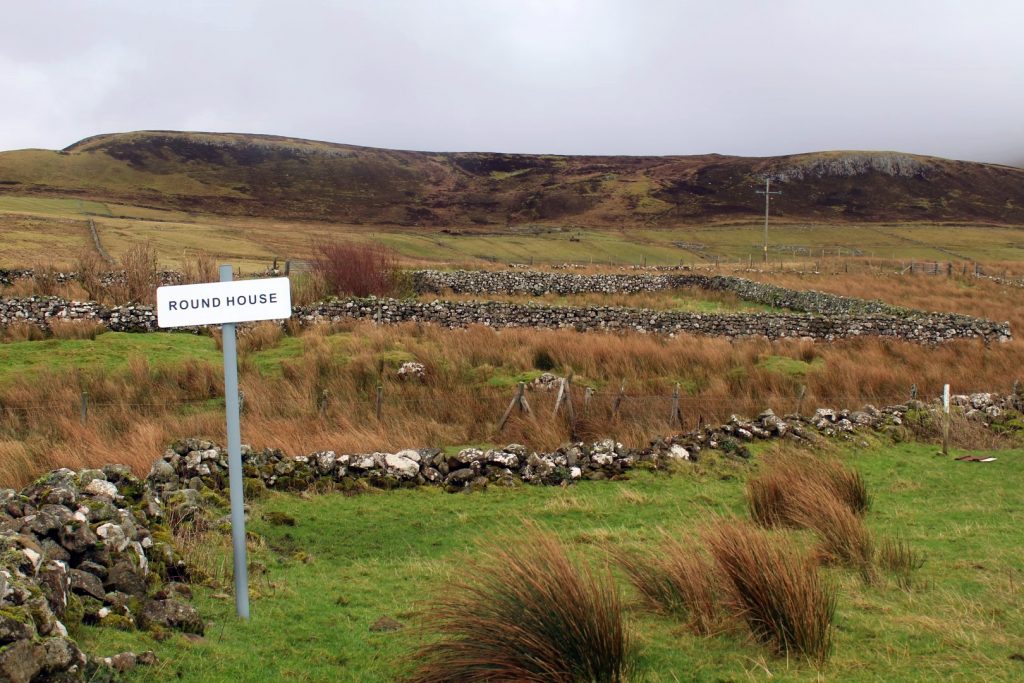
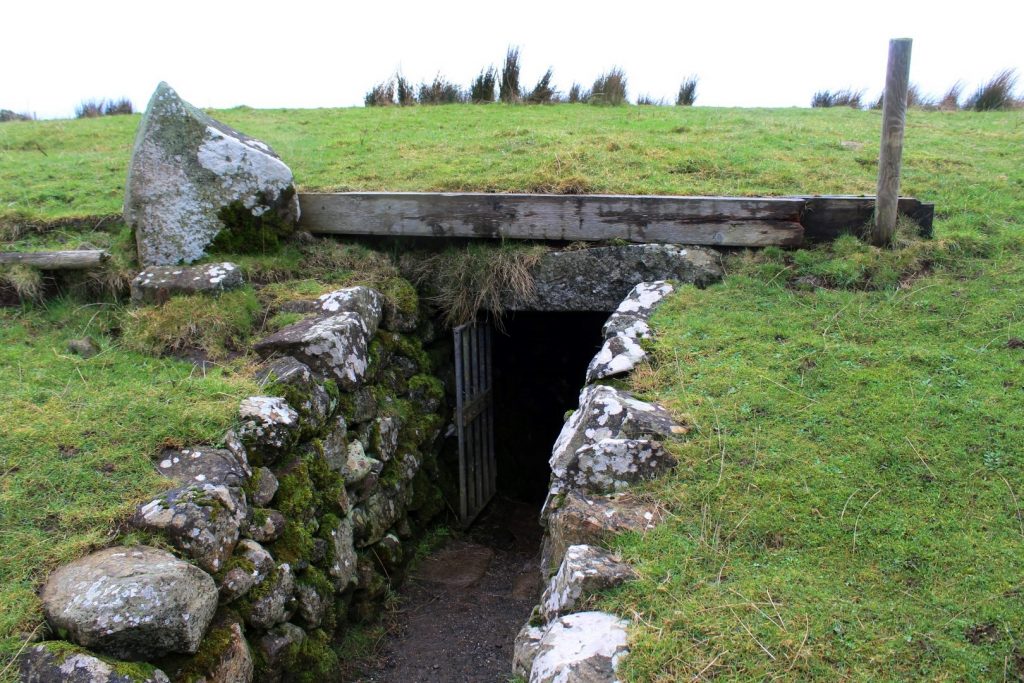
Skye Museum of Island Life
From Kilvaxter, we hoped to get to Duntulm Castle on the north end of the peninsula, although the rather wet weather meant limited cars on the road. A few cars came by and stopped to tell us that they were only going a bit further along the road. We ended up walking almost two miles, until we came to the Skye Museum of Island Life, dedicated to preserving an 18th century township of thatched cottages. The museum is only open during the summer, but since I LOVE open air museums, I went to explore the grounds while Brandon continued trying to hitch a ride.
As soon as I got back to the road, Brandon wandered off to catch a pokémon (yep, he’s still playing that 2016 game), but there was no time as a local man stopped for me. I called Brandon back and we set off to Duntulm Castle with our new friend who was incredibly knowledgeable about the area.

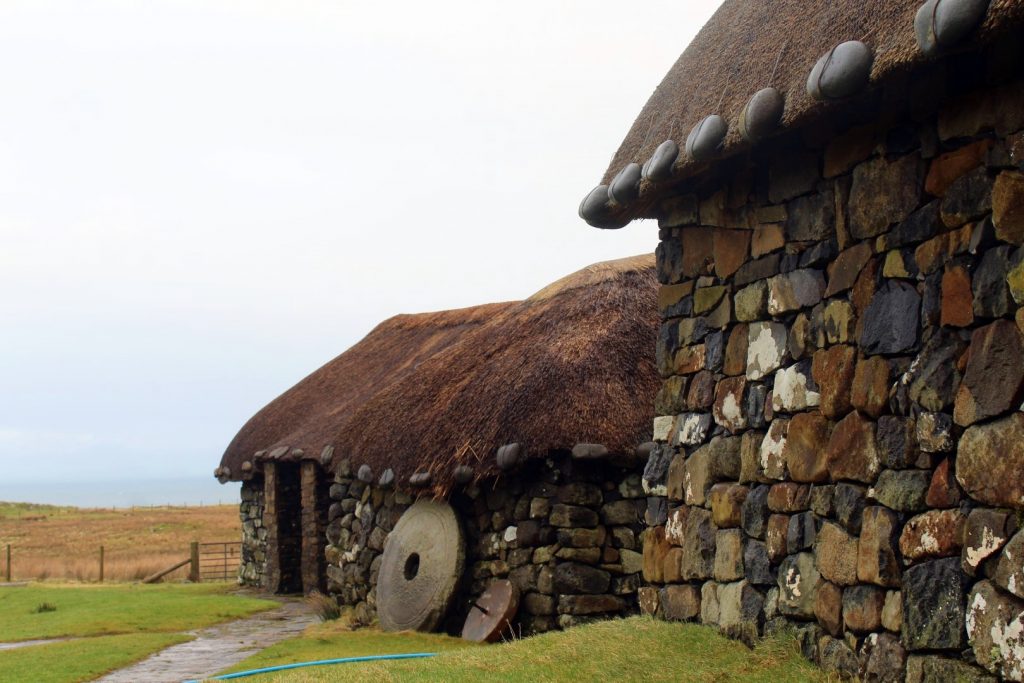
The Abandoned Hotel
We were dropped off near the Duntulm Castle Hotel, once accommodating up to 50 guests, now accommodating only mice and spiders. I don’t know for how long the hotel has been abandoned, but it looked like years had gone by since anyone had paid any attention to it. Unfortunately, we couldn’t find a window to climb in, but exploring it from the outside was just as interesting. I can imagine how wonderful a hotel this place could be – it’s massive and is located right next to Duntulm Castle. There could be some serious tourism dollars in that place!

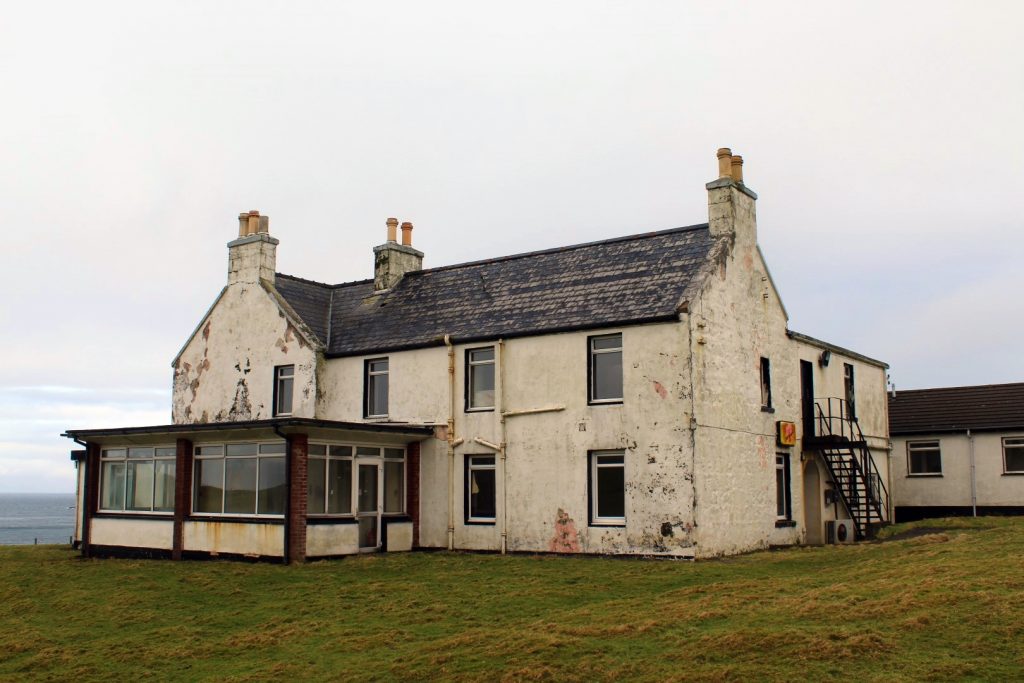


Duntulm Castle
On a basalt promontory by the sea stands the ruins of Duntulm Castle, a 14th century castle which was once the seat of the chiefs of Clan MacDonald of Sleat. According to the legend, the castle was abandoned around 1732 after the infant son of a residing chief fell to his death from a window. The infant was in the care of a nursemaid, who allegedly was set adrift on the ocean in a small boat as a punishment. The castle is said to be haunted by many ghosts, including that of the nursemaid.
Anywhere I looked online stated that the castle was closed off for the public, but we were able to get there easily. We could access all parts of the castle and spent ages exploring and enjoying being the only tourists at such an intriguing place.
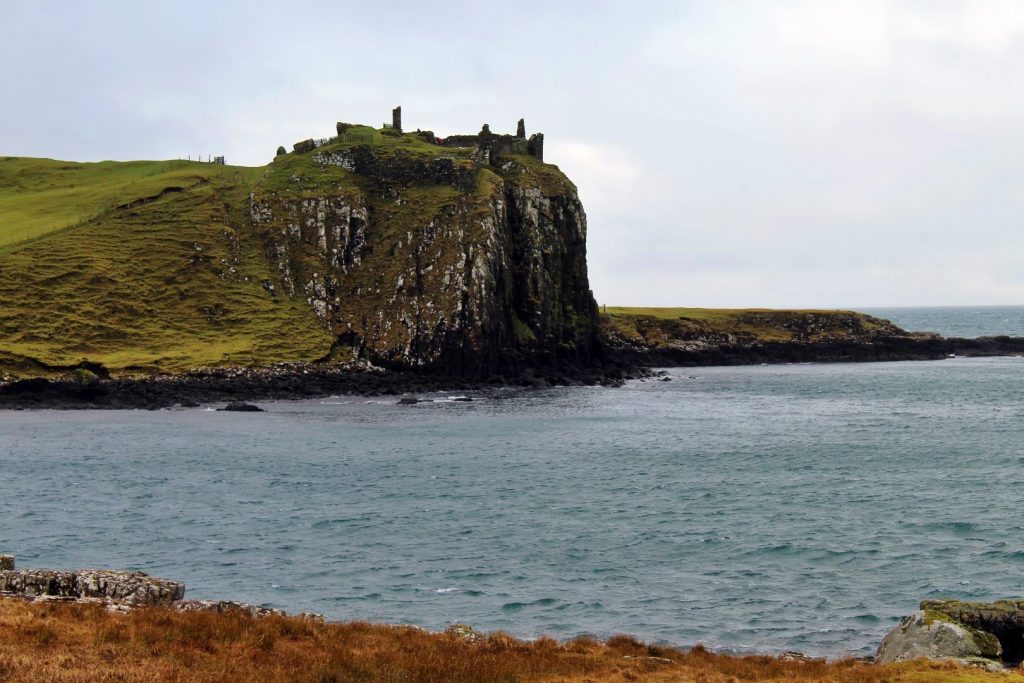
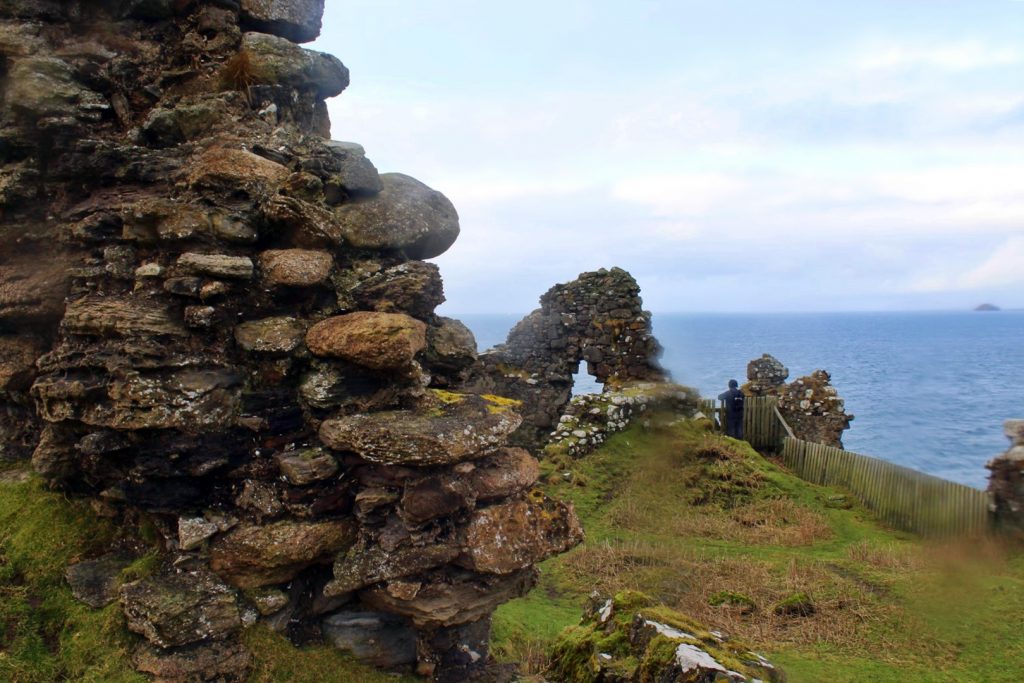
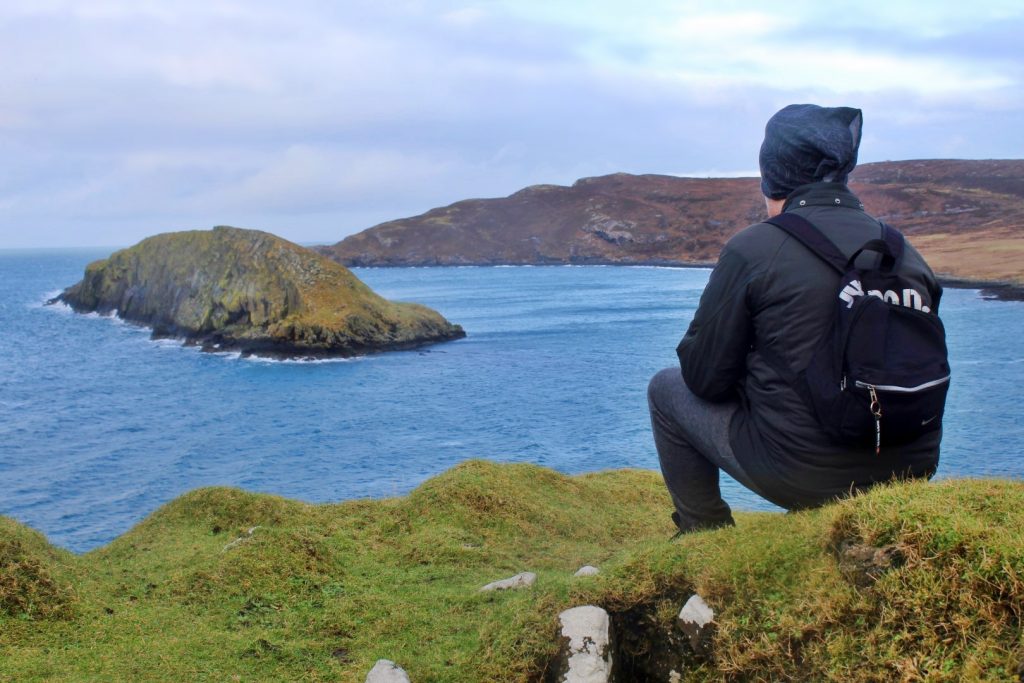
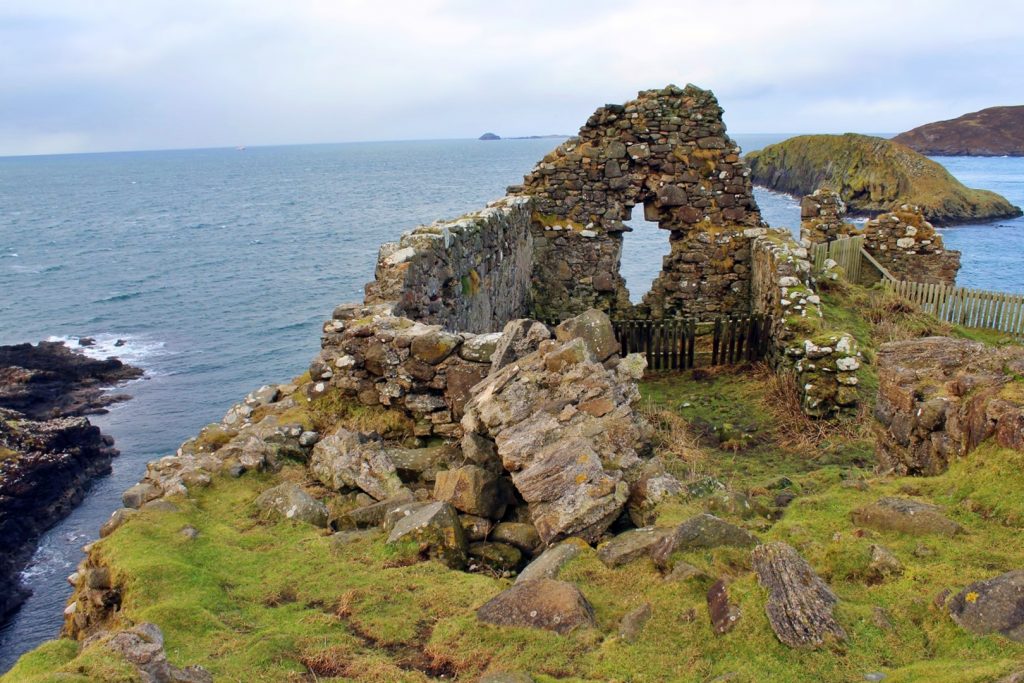
The Northernmost Point on Skye
The last adventure of the day was my favourite one yet – climbing Meall Deas (100 meters high) and Meall Tuath (116 meters high) for incredible views of the northernmost point on Skye, the Rubha Hunish peninsula.
With a Coop Meal Deal sandwich in our hands, we headed down from the castle, along the coast and up the first hill, Meall Deas, while joking about it’s funny name (so similar to Meal Deal!!). Even though the hill is tiny, it was quite a difficult walk as it took crossing a wet marshland to get there. The climb up was quick and easy though, and the views incredibly rewarding. Even though we came for the views of Rubha Hunish, the best views were actually of the Rubha Voreven peninsula, in my opinion. This has to be one of the best kept secrets in Skye. Very few tourists even consider doing this hike, but for me, it was one of my favourites.
From the summit of Meall Deas (meaning ‘south hill’), we continued a bit further up to Meall Tuath (meaning ‘north hill’) to see the bothy at the summit. It looked like a cozy place for a picnic or nap, but unfortunately, it was closed.
We had planned on walking all the way out to the northernmost point of Skye, the edge of Rubha Hunish, but the daylight hours were running out and we still had to hitchhike back to Portree, so we decided to call it a day.

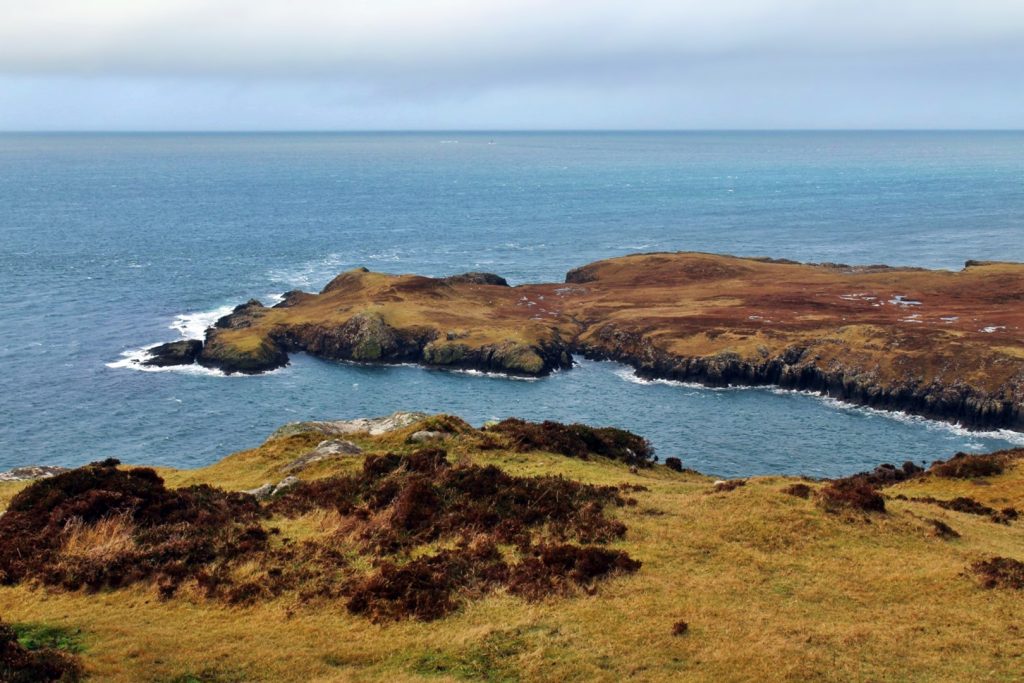


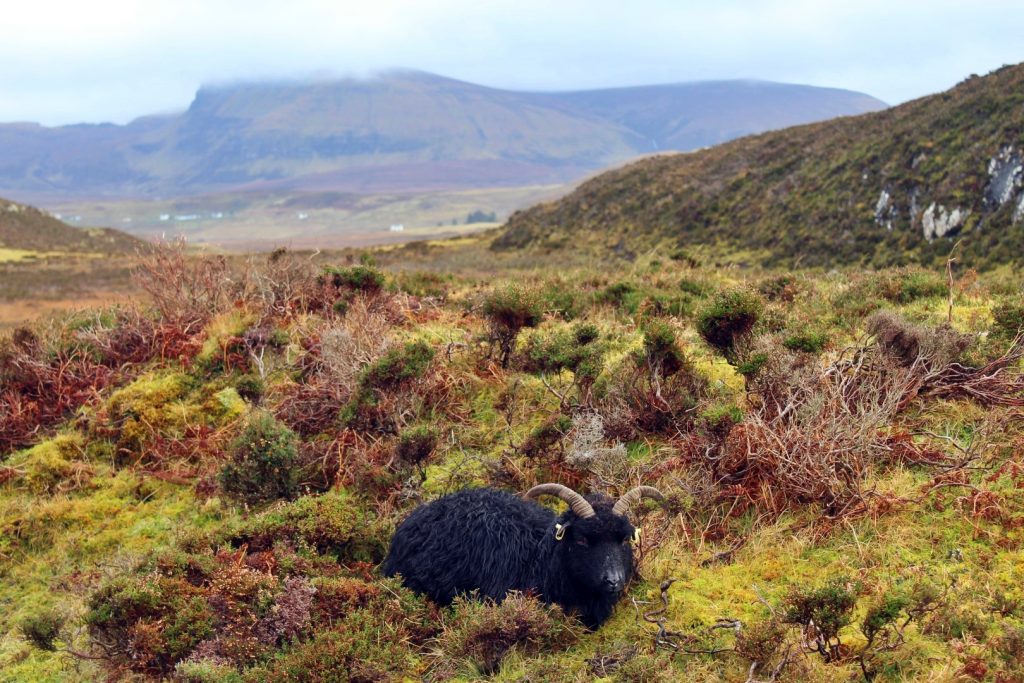
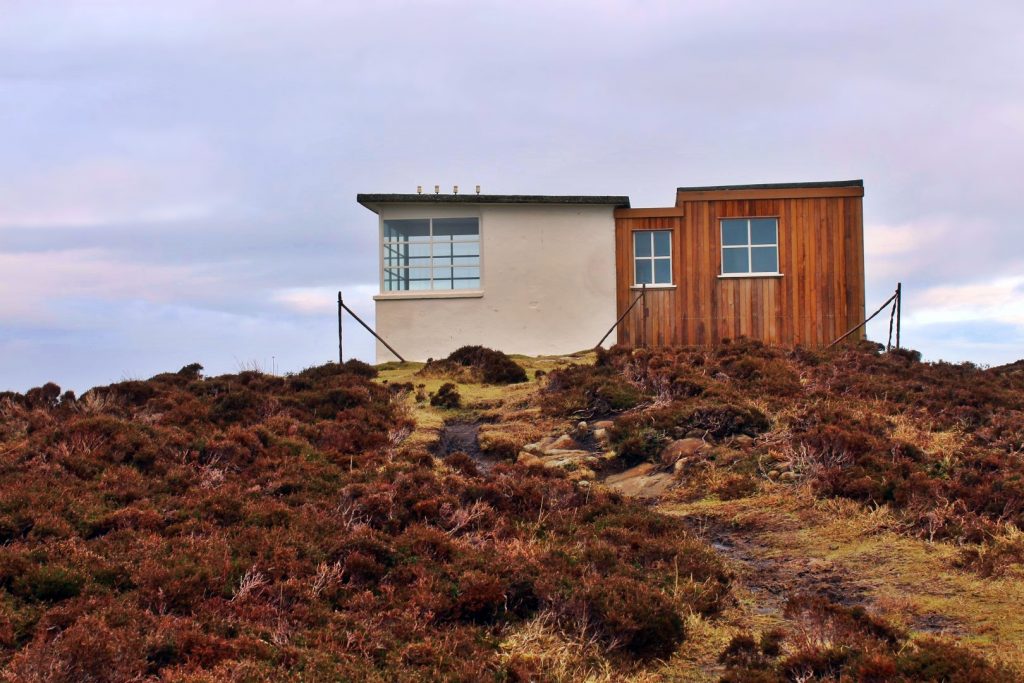
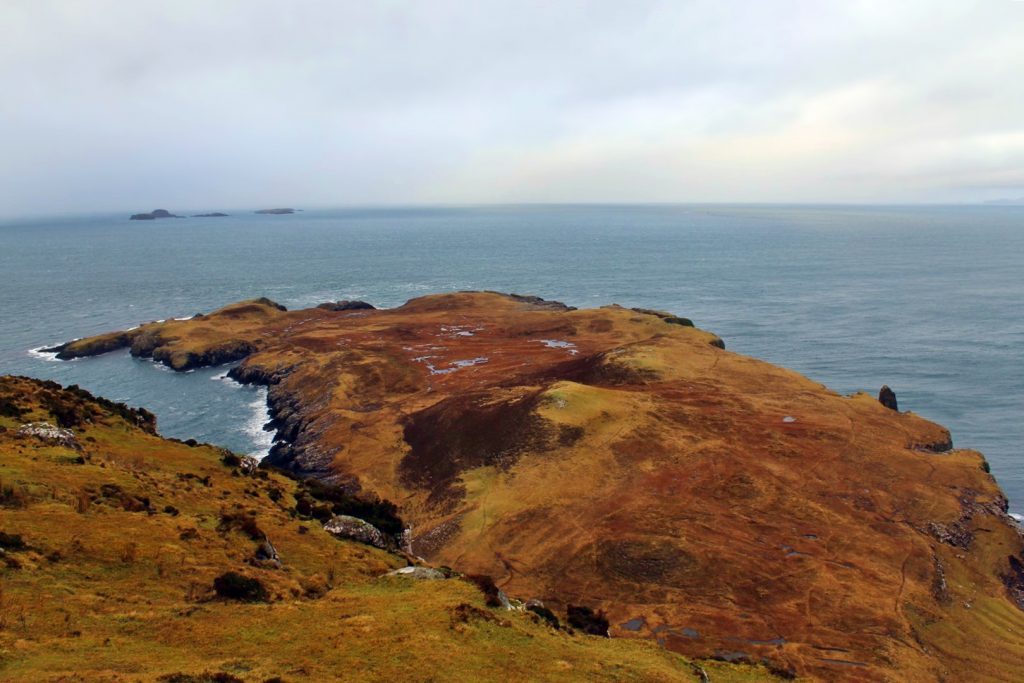
We walked through marshlands for over an hour to get to the road from where we could hitchhike back to Portree. But we actually never got to the main road as a local landowner (and celebrity), Alan with the ten dogs, picked us up. He was coming down the country lane in complete silence and scared the life out of us. He stopped for a chat (very common in small communities on Skye!) and then offered to take us to Uig. He dropped us off by the supermarket in Uig, from where it should be easy to get a ride to Portree. But we weren’t quite that lucky. It had been going so well the entire day, but in Uig, we were stuck. We waited for over an hour, freezing our butts off, before a bus finally came to our rescue – again!
Leave a Comment
Pingback: The Storr: A beautiful January day at Skye’s most popular spot – Northtrotter on 20/02/2020
Pingback: Hiking to the Fairy Pools through the Cuillin Mountains – Northtrotter on 20/02/2020
Pingback: Beyond the beaten path on Skye: Lealt Falls and Brother’s Point – Northtrotter on 20/02/2020
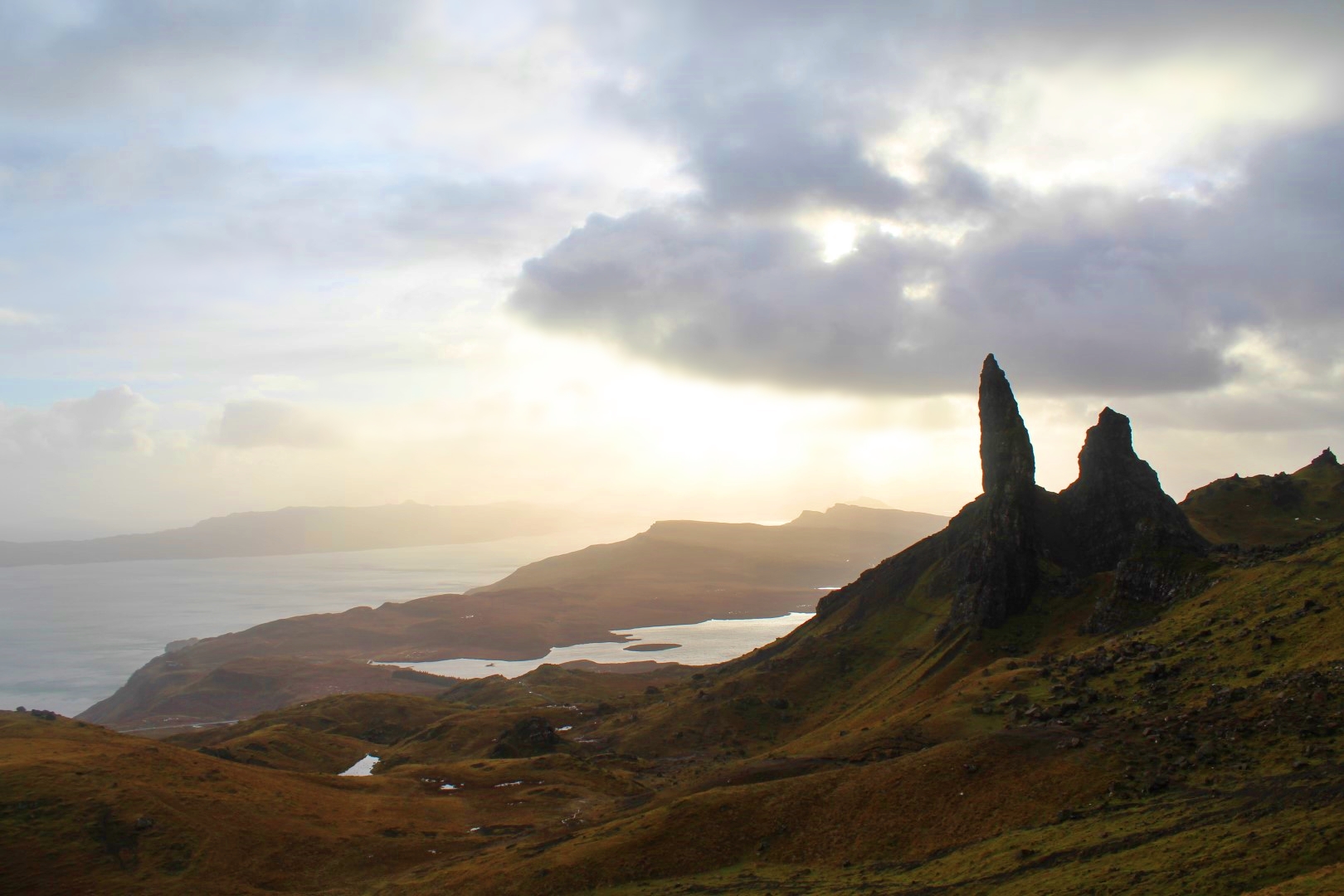
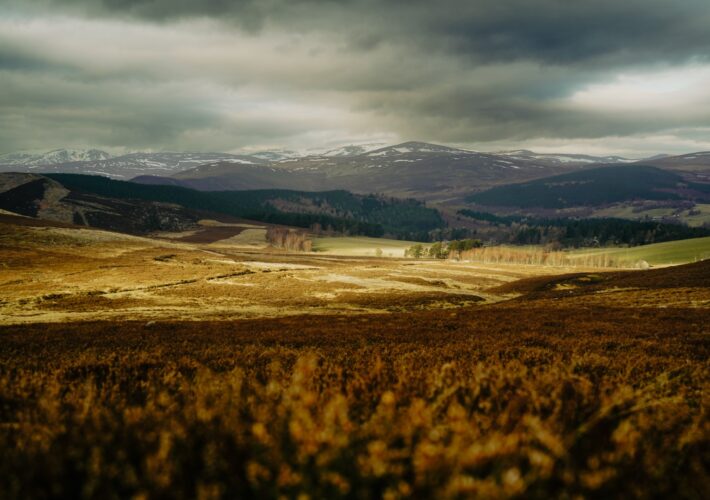
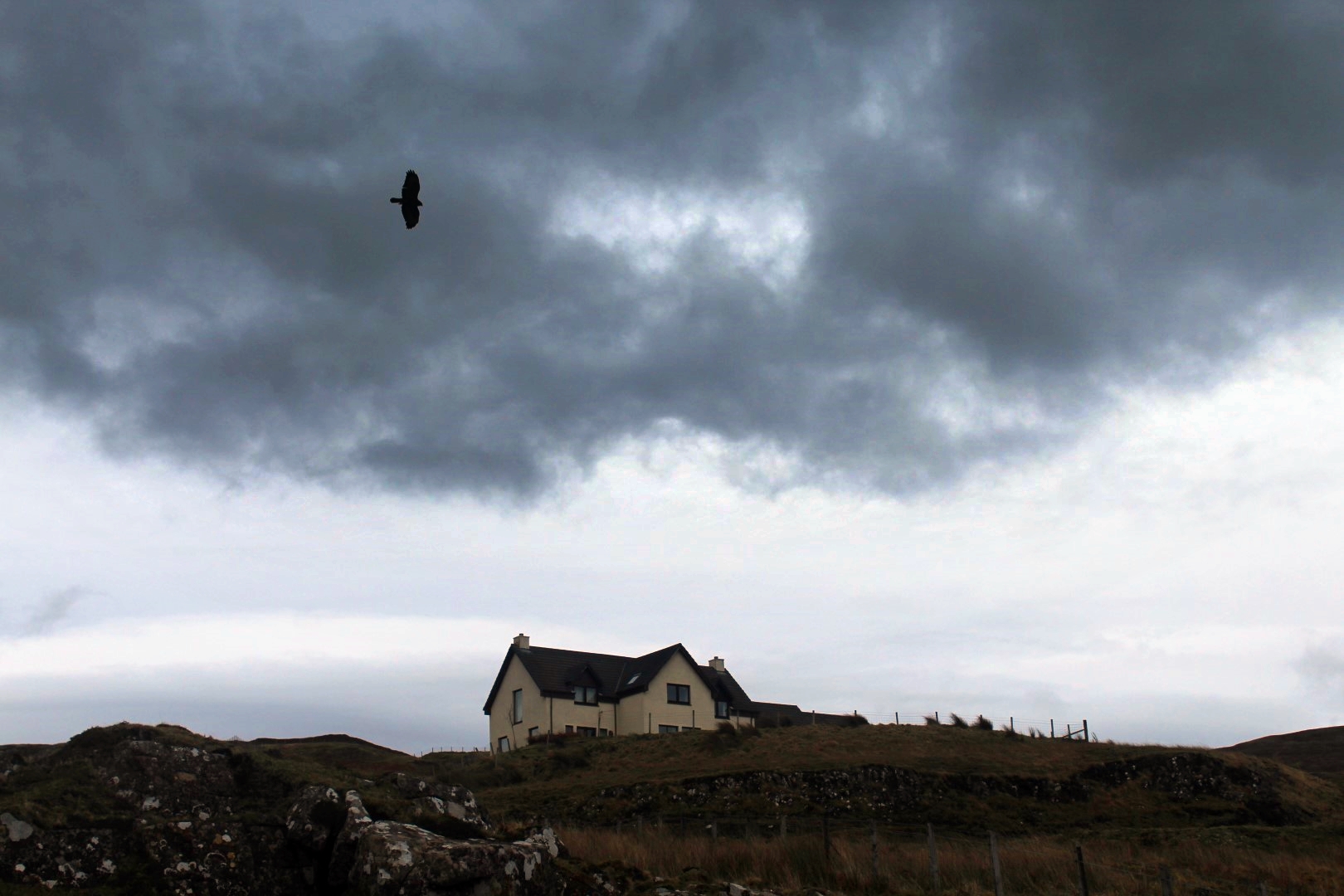

3 COMMENTS